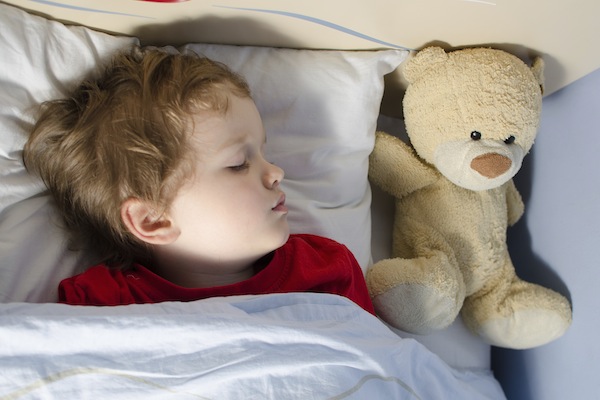
or over a decade as a sleep professional, I’ve gotten used to people asking me what the “secret” is to getting a baby to sleep through the night.
Of course, there is no ONE secret. Teaching a child healthy sleep habits is a combination of lots of different things.
But that doesn’t mean that there aren’t some shortcuts, either!
With that in mind, today I’d like to share with you 7 different shortcuts you can start trying over the next few nights to get your child sleeping better.
Let’s get right to it:
Sleep Shortcut #1: Watch the waking hours
One of the BIGGEST enemies of sleep – especially for babies and toddlers – is overtiredness… and many parents are surprised to learn just how soon their children get overtired!
Here’s a quick guide to how long your child should be awake between naps during the day:
Newborns (0-12 weeks): 45 minutes of awake time
3-5 months: 1.5-2 hours of awake time
6-8 months: 2-3 hours of awake time
9-12 months: 3-4 hours of awake time
13 months to 2.5 years: 5-6 hours of awake time
If you make sure that your child is put down for naps BEFORE they get overtired, you’ll find that they fall asleep more easily at naptime… AND that they are more relaxed at bedtime, too!
Sleep Shortcut #2: Don’t Be Afraid Of The Dark
We humans (babies and toddlers included) sleep better in the dark.
Try making your child’s room as dark as possible. (I recommend using blackout blinds, taping cardboard over the windows, or whatever it takes!)
In many cases, even the glow from a nightlight or a digital alarm clock can be enough to disrupt your child’s sleep cycle!
BONUS TIP: Try to keep your child’s room as dark as possible during daytime naps, too. This can often make a BIG difference in how long your child will nap during the day!
Sleep Shortcut #3: Be Predictable (And A Little Boring)
Babies and toddlers love predictable routines. And a predictable bedtime routine (lasting no longer than 30 minutes) is a great way to let your child know when the time for sleep is coming.
A typical bedtime routine might look something like this: – bath (5 minutes)
– put on pajamas (5 minutes)
– read a story or sing some songs (10 minutes)
– nursing or bottle (10 minutes)
Make sure that this routine is the same every single time. Remember, you want bedtime to be as predictable as possible for your child!
After your bedtime routine is complete, be boring. Lots of children will try to “drag out” bedtime by playing games, throwing toys out of the crib, standing up, etc.
Don’t participate.
If your child has thrown their blanket or favorite stuffed toy out of the crib, calmly return the item without saying a word. Be boring, and the games shouldn’t last too long!
Sleep Shortcut #4: Feed AFTER Naps, Not Before
For a lot of babies and toddlers, the single biggest reason they don’t sleep well has to do with a feeding-sleep association.
In other words, your child has “linked” the ideas of feeding and sleeping. They think that they need a bottle or nursing BEFORE they can fall asleep.
By feeding right after naptime – instead of before – you can help your child break this feeding-sleep association.
IMPORTANT NOTE: This strategy should only be used before naps, not before putting your child to bed for the night. (A full tummy is needed to make sure your child doesn’t wake up hungry during the night!)
Sleep Shortcut #5: Same Place, Same Time
Remembering that our children love predictability, it’s a good idea to have your child sleep in the same place – at the same time – every day.
This means that naptime should happen in the same place as nighttime sleep – rather than in car seats, strollers, your lap at the coffee shop, etc.
For many parents, simply changing WHERE their child naps during the day causes a big improvement in the length and quality of nighttime sleep.
BONUS TIP: When you are putting your child to sleep for the night, it’s a good idea to make sure that they fall asleep where you want them to stay asleep.
In other words, if your child falls asleep in your arms on the couch and then wakes up during the night in a completely different place (like their crib), chances are they’ll be surprised… and start crying to let you know about it!
Sleep Shortcut #6: Try The “1, 2, 3″ System
When your child wakes up during the night – or during a nap – and starts crying or fussing, try to wait a specific length of time before going in to check on them.
The first day you try this, I recommend waiting exactly one minute before going in to check on your child. On the second day, wait two minutes. Three minutes on the third day, and so on.
Why?
Well, everyone (babies and toddlers included) will wake up briefly at the end of each 45-minute “sleep cycle.”
Most adults wake so briefly that we don’t even remember it in the morning. But children who haven’t learned to fall asleep independently need a little longer.
This “1, 2, 3″ System gives your child the opportunity to get themselves back to sleep – without your help. And once your child has learned this skill, you’re home free!
Sleep Shortcut #7: Take Five
Before you put your child to bed (for naps or at nighttime), make sure the five-minute period before they are put to bed is very calm and relaxing.
No throwing your toddler in the air… or watching TV… or tickle fights… in the five minutes immediately before bed.
IMPORTANT NOTE: I totally encourage tickle fights and any other kinds of rowdy fun you can think of with your children. It’s fun for the whole family! Just NOT in the five minutes before bed. (Right after waking up is a great time to play!)
The Next Step?
Like I said, these are “shortcuts” – quick tricks that, for some parents, are the missing piece of the puzzle that gets their child sleeping through the night.
And while I hope that you’ll be one of the lucky parents who’s able to solve their children’s sleep problems using one of these tricks, I’m also here for you if you need a little more guidance.
The Sleep Sense Program is the best-selling, step-by-step system that I have spent more than a decade perfecting. It’s been used by more than 57,000 parents to get their children sleeping through the night – in the shortest time possible.
The reason parents are so successful with The Sleep Sense Program is that it’s extremely straightforward and easy to follow. You get books, worksheets, and a complete “how-to” video library that shows you (on a night-by-night basis) exactly what steps to follow. It’s accessible right on your computer, iPad, tablet, or smartphone.
 Dana Obleman (sleepsense.net) has appeared on CNN, CBC, and CTV and has had articles published in The Huffington Post, The Washington Post, Lifetime Moms and WebMD. Dana’s sleep training methods are aligned with the best practices recommended by The American Academy of Pediatrics, The Canadian Pediatric Society, and The UK's National Health Service. Dana is also a member of the National Sleep Foundation and The Association of Professional Sleep Consultants (APSC).
Dana Obleman (sleepsense.net) has appeared on CNN, CBC, and CTV and has had articles published in The Huffington Post, The Washington Post, Lifetime Moms and WebMD. Dana’s sleep training methods are aligned with the best practices recommended by The American Academy of Pediatrics, The Canadian Pediatric Society, and The UK's National Health Service. Dana is also a member of the National Sleep Foundation and The Association of Professional Sleep Consultants (APSC).


























